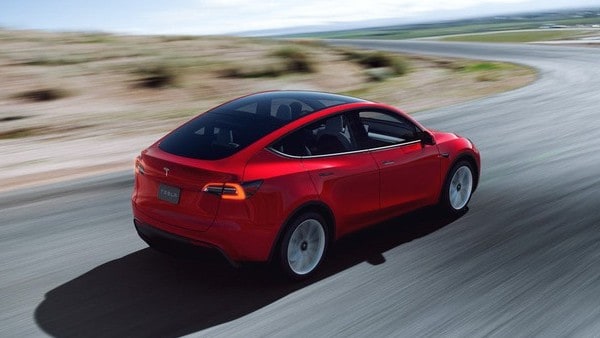This article was originally published on Fool.com. All figures quoted in US dollars unless otherwise stated.
What happened
It's Monday, and with the Dow, S&P 500, and Nasdaq all down fractions of a percent, it seems stock markets are going into the red again today -- and so is Tesla (NASDAQ: TSLA).
As of 11:10 a.m. ET, Tesla shares have fallen 4.2% on reports that COVID-19-related lockdowns in China have dented the company's (still impressive) market share in electric vehicles (EVs) -- and that the situation won't be immediately fixed.
So what
Tesla remains "dominant" in EVs, reports TheFly.com today, retaining a 20% market share, but competition is heating up and the company lost market share to new rivals in 2021. For consumers, this is great news -- investment bank Bernstein says most growth in EV sales last year came from new models, "highlighting the pace of innovation in EVs" and providing new options for car buyers. With Tesla no longer the only game in town, it makes sense that its market share would begin to erode.
That being said, Tesla's problems are magnifying in 2022 as the coronavirus crisis in China continues to drag on. Last week, you'll recall, shutdowns to contain COVID in Shanghai in April slowed Tesla's production to as few as 200 cars per day. Today, Reuters reports Tesla is haltingly restoring production, and back to 1,200 units per day -- less than half capacity -- but has postponed by another week its plans to ramp to 2,600 units per day.
Now what
Are these problems big enough to justify subtracting $32 billion from Tesla's market capitalization, though? I don't think so.
Consider: Tesla's production in China may have been interrupted by COVID. Recovery of past production levels may have been delayed by another week. But at 1,200 cars per day (i.e., 438,000 vehicles a year), Gigafactory Shanghai is already nearly back to its production levels of 2021 (484,100 vehicles). If it takes Tesla another week -- or another month, or even another two months -- to get Shanghai producing 2,600 units per day, in the big picture that's really insignificant. Whenever Tesla gets to that level, the company will be producing just 949,000 vehicles per year at just this single factory -- more than Tesla sold worldwide last year!
Seems to me, just the promise that Tesla is working toward this goal is good news for Tesla stock -- and today's sell-off is a buying opportunity.
This article was originally published on Fool.com. All figures quoted in US dollars unless otherwise stated.









